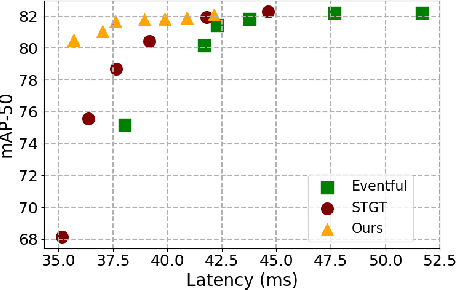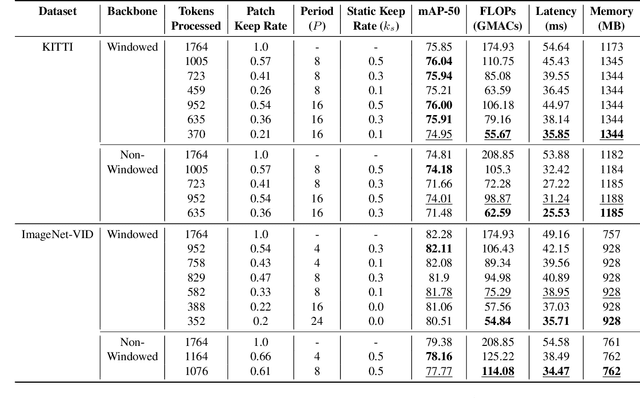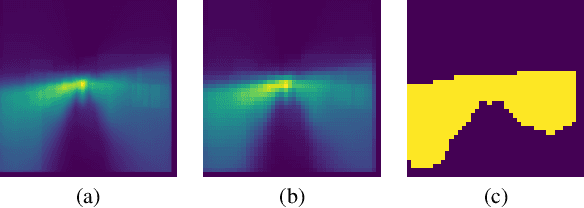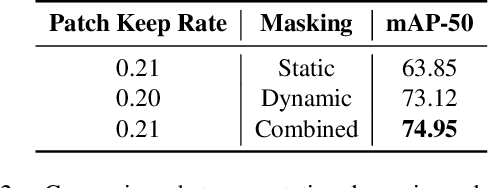MaskVD: Region Masking for Efficient Video Object Detection
Paper and Code
Jul 16, 2024



Video tasks are compute-heavy and thus pose a challenge when deploying in real-time applications, particularly for tasks that require state-of-the-art Vision Transformers (ViTs). Several research efforts have tried to address this challenge by leveraging the fact that large portions of the video undergo very little change across frames, leading to redundant computations in frame-based video processing. In particular, some works leverage pixel or semantic differences across frames, however, this yields limited latency benefits with significantly increased memory overhead. This paper, in contrast, presents a strategy for masking regions in video frames that leverages the semantic information in images and the temporal correlation between frames to significantly reduce FLOPs and latency with little to no penalty in performance over baseline models. In particular, we demonstrate that by leveraging extracted features from previous frames, ViT backbones directly benefit from region masking, skipping up to 80% of input regions, improving FLOPs and latency by 3.14x and 1.5x. We improve memory and latency over the state-of-the-art (SOTA) by 2.3x and 1.14x, while maintaining similar detection performance. Additionally, our approach demonstrates promising results on convolutional neural networks (CNNs) and provides latency improvements over the SOTA up to 1.3x using specialized computational kernels.
 Add to Chrome
Add to Chrome Add to Firefox
Add to Firefox Add to Edge
Add to Edge